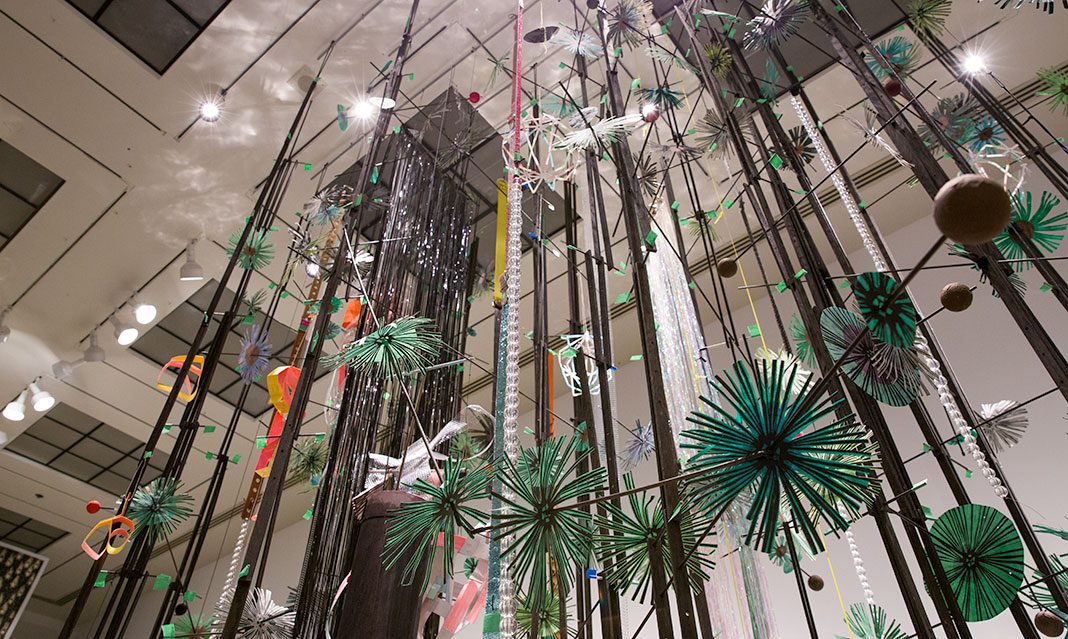“The Past Is Never Over”—these are among the first words I associate with Canadian artist Libby Hague’s newest exhibition at the Art Gallery of Mississauga. Not only because this is the name of the exhibit, but because the past is so evidently constant and consistent within the works displayed this past Thursday evening.
With printmaking and visual installations topping the height of her experimental capacity, Hague brings forth a collection of works that are creatively frightening in terms of their authenticity to her artistic beliefs.
Hague is not afraid to steer outside of what is normal, and challenge our views on how art should be presented. One work of art that sparked interest in me was “Enchanted Forest.” It is an installation hanging in the backroom of the gallery. It hovered less than a meter above the ground, and it tells the story about how our environment works. The piece was authentic to its name: a forest of strings dangled off the ceiling, with what seemed to look like makeshift tiny people and little green snowflakes hanging off on the side. The work is supposed to reflect the hardships of one’s journey and how nature plays a role in our everyday lives.
Attached to many artworks were strings of words and quotes that lined the sides of the installations. Stepping further into the gallery, I see Hague, herself, examining her own works. When she passed by me, I gave her a smile and complimented the immense effort that has gone into the production of her latest exhibit. When we started talking logistics, Hague revealed important information about her works. According to her, the words on the wall not only accompany her pieces but they are crucial to how these works are supposed to stimulate their meanings, “I’m trying to slow people down with text and how people think about the range of possibilities in being human and what kind of human being they are.”
The text, it seems, makes as much as an artistic statement as the visual art itself. One work entitled “Leap of Faith” involved images of important historical figures like Van Gogh. Underneath the piece, there is a strip of words that read: “Ghost stories—the past again, refusing to go away.” The quotes and words she includes in these pieces seem to engage us in thoughts we are already aware of. Though these figures are people of the past, they still impact us every day.
The exhibit itself encourages art-goers to make sense of why the world works the way that it does. Hague tells me that this is true, but the point of her art is to have people not only look at it, but to see it. This takes time and patience—without this, her work may be overlooked if we are too hasty in our judgments.
“Because it’s a retrospective, it’s about time and its about getting some time and distance to understand things,” she told me, “I’m thinking if you have a little distance maybe you can understand your own nature.”
Nature is a strong theme in the gallery and I can feel it. There are hints of it within works like “Enchanted Forest.”
If art is supposed to soothe us, or prepare us to turn back to the more natural world, then it may have met its goal here.



